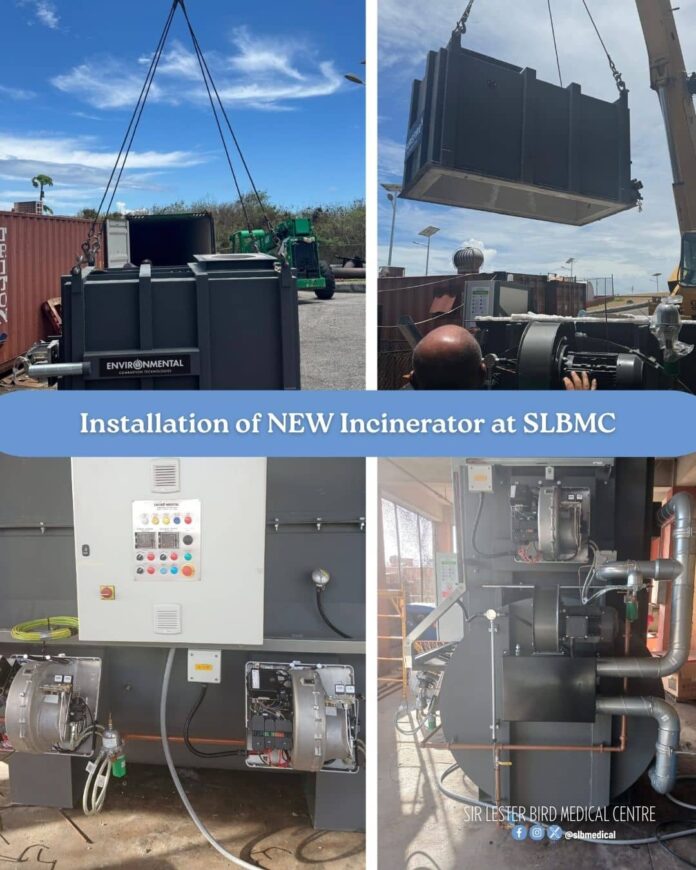The Sir Lester Bird Medical Centre (SLBMC) has taken a major step toward safer, more sustainable healthcare with the installation of a state-of-the-art medical waste incinerator. This initiative was funded by the Government through the Caribbean Development Bank (CDB).The new system marks a significant investment in public health protection, environmental stewardship, and regulatory compliance for Antigua and Barbuda’s flagship hospital.
The incinerator is designed to handle both medical and non-medical waste safely and efficiently, aligning with international standards such as those from the World Health Organization (WHO) and the Basel Convention. It will play a key role in reducing environmental and health risks by ensuring the safe disposal of medical waste and incinerator ash, while also supporting the hospital’s broader waste segregation and reduction efforts.
“This incinerator is more than just new equipment — it represents a milestone in how we protect both our patients and our environment,” said Marlon Jones, Director of Operations & Maintenance at SLBMC. “By modernizing our waste disposal practices, we are not only safeguarding public health today but also building a foundation for more sustainable healthcare in the future.”
The new installation is part of SLBMC’s broader plan to enhance waste management practices across the facility.
Danley Phillip, SLBMC’s newly appointed Director of Administration, emphasized the importance of the investment: “This initiative strengthens the hospital’s infrastructure and reflects our commitment to responsible, forward-looking management. It’s about doing things the right way — for our staff, our patients, and the wider community.”
Medical Director Dr. Shivon Belle-Jarvis highlighted the clinical significance of the upgrade: “Proper waste disposal is a vital part of infection control. With this new incinerator, we can be confident that SLBMC is meeting the highest standards of safety, which directly benefits both our patients and our healthcare teams.”
The hospital is also prioritizing training and staffing to ensure the safe operation of the incinerator, along with regular monitoring and management of emissions to prevent air, soil, or water contamination.


